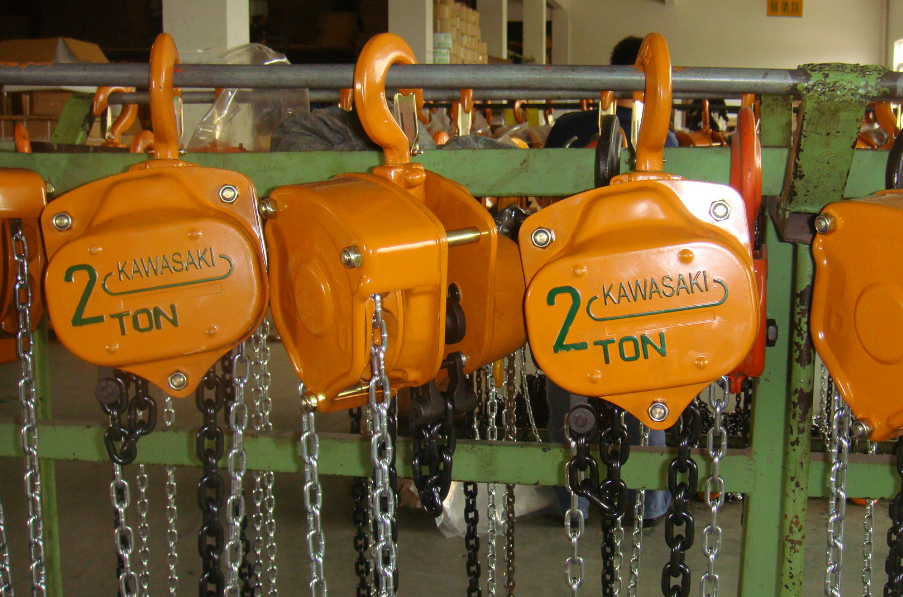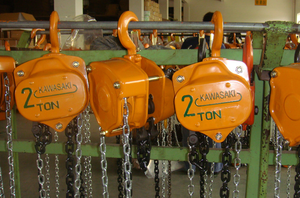
Manual Hoist Inspection Methods and Standards Guide Inspection and Certification Services for Warehousing and Factory Audits
Manual hoists (also known as fairy hoists, chain hoists, reverse chains or ring chain hoists) are compact and portable manual lifting equipment that are widely used in factories, mines, construction sites, docks, etc. They are particularly suitable for equipment installation and cargo lifting in environments without power supply. Their quality directly affects the safety and efficiency of operations. To ensure that manual hoists meet design and safety requirements, systematic inspection and verification must be carried out. This article, based on the key quality control points in the factory inspection and verification process, elaborates on the inspection standards, testing methods, and key points of factory audits for manual hoists, providing practical references for purchasers, quality inspectors, and project managers.
I. Product Structure and Working Principle
The manual hoist is mainly composed of a hook, lifting chain, hand chain, braking system (ratchet, friction plate, ratchet pawl), gear transmission mechanism and casing, etc. Its working principle is to drive the gear set by pulling the hand chain, which in turn lifts or lowers the heavy object, and achieves automatic braking under load by relying on the friction plate type unidirectional brake.
II. Main Inspection Standards and Basis
The inspection of manual hoists should follow international, national and industry standards, mainly including:
JB/T 560.1 - 560.4 "Type Parameters, Dimensions, Acceptance General Principles, Technical Conditions and Safety Specifications for Hand-Pulled Hoists"
JB/T 3682 "Hand-Pulled Hoist for Steel Wire Ropes"
JB/T 3928.1 - 3928.2 "Basic Parameters and Dimensions, and Technical Conditions of Chain Hand-Powered Hoists"
JIS B 8802-1981 "Japanese Industrial Standard: Hand Pulley Hoist"
CE certification, GS certification (required for exporting to the European market)
GB/T 2828.1-2012 "Counting Sampling Inspection Procedures" (Applicable to AQL Sampling Schemes)
III. Key Inspection Items and Methods
1. Document and Label Verification
Verify the consistency between the product nameplate, certificate of conformity, manual and the order requirements;
Check whether all safety warning signs are complete (such as lifting capacity, lifting height, etc.);
Verify that there is a rated load marking on the hook and a strength grade identification on the chain.
2. Appearance Quality Inspection
Surface treatment: The casing has no cracks, burrs, or rust; the paint is evenly applied without peeling off;
Hook inspection: The surface is smooth without cracks, folds or signs of welding repair.
Chain quality: The lifting chain is free from knots, rust, scratches, and the ends are securely fixed.
Bolting and Assembly: The bolting is firm without any burrs, and all fasteners have effective anti-loosening measures.
3. No-load test
Move the forward lever and reverse lever back and forth three times. The mechanism should be flexible and free from any jamming.
4. Rated Load Test
Load the rated load on the dedicated test bench, measure the hand pulling force and the one-way reciprocating stroke of the steel wire rope, and ensure compliance with the standard requirements.
5. Dynamic Load Test
Load 1.1 times the rated load, ascend and descend each once. The moving distance for each time should be ≥ 200mm.
The entire machine should operate smoothly without any abnormal noises or jams.
6. Static load test
Gradually increase the load to 1.5 times the rated load and maintain it for 10 minutes;
After disassembly, the opening of the hook deforms by no more than 0.25%, and the clips and the clamping plate do not undergo any permanent deformation.
7. Hook strength test
Deformation test: Load to 2 times the rated load for 1 minute, the deformation of the hook opening shall be ≤ 0.25%;
Breakage test: Load to 4 times the rated load for 1 minute, and the hook should not break.
8. Reliability Test
Operate continuously under the rated load, ensuring that the cumulative travel distance of the steel wire rope is ≥ 120 meters;
During the test, the steel wire rope must not be replaced and there should be no abnormalities with the entire machine.
9. Braking performance test
The brake should engage reliably, with the pawl in full contact with the ratchet under the action of the spring;
When the rated load is applied, the brake should be able to lock automatically immediately.
IV. Key Points of Factory Audit
During the factory audit process, it is necessary to comprehensively assess the quality management system and production capacity of the manufacturing enterprise:
Raw material control
Verify the material certificate of the chain (such as 20M2 high-strength alloy steel);
The material of the hook must meet the requirements of the alloy steel forging process.
Production process control (In-Process Quality Control)
Heat treatment process records (such as medium-frequency quenching);
Gear processing accuracy and meshing inspection;
Brake assembly and debugging record.
Testing equipment and calibration
The test bench and material testing machine need to be calibrated regularly.
The torque wrench, measuring tools, etc. are all within their validity periods.
Traceability system
From raw materials to finished products, there should be a unique identification number to enable full-process traceability.
Certification and Compliance
The product must obtain certifications such as CE and GS and comply with the regulations of the target market.
V. Common Defects and Judgement Criteria
Defect Category Concrete Manifestation Judgement Criteria
Severe Defect (Critical) Chord crack, brake failure, chain break Reject outright, batch rejected as non-compliant
Major Defect (Major) Excessive hand-pulling force, poor coating, incorrect marking AQL = 1.0
Minor Defect (Minor) Mild rust, non-standard packaging, missing documents AQL = 2.5
Sampling Scheme: Follow GB/T 2828.1. Generally, Level II is adopted, and the AQL standards are as follows.
Critical criterion: Serious defects are classified as "accepted" (0), while returns are classified as "rejected" (1). Major and minor defects are judged according to the AQL standard.
VI. Conclusion
Although the manual hoist is a small lifting equipment, its safety directly affects the life and property safety of the users. By strictly implementing factory inspection, performance testing, and factory audit, the quality of the product can be comprehensively controlled. It is recommended that purchasers and quality inspection institutions focus on the braking performance, chain strength, and hook reliability, and conduct tests using professional tools and international standards to ensure that the product meets the design and usage requirements. Only by integrating quality control throughout the entire production and inspection process can we provide users with safe and reliable manual lifting solutions.
Share this product

Manual Hoist Inspection Methods and Standards Guide Inspection and Cer
A manual hoist is a compact and portable manual lifting device, widely used in factories, mines, construction sites, docks and other places.
